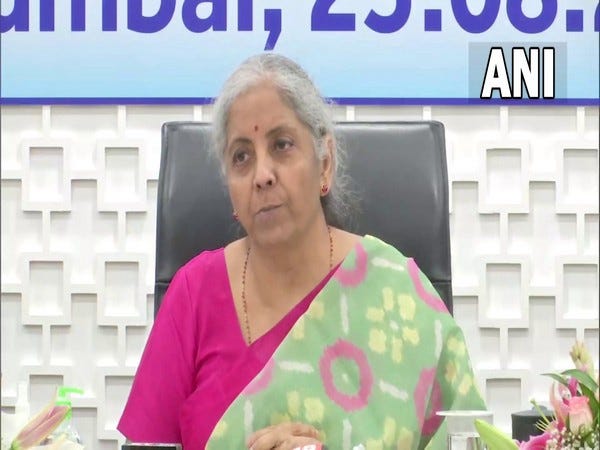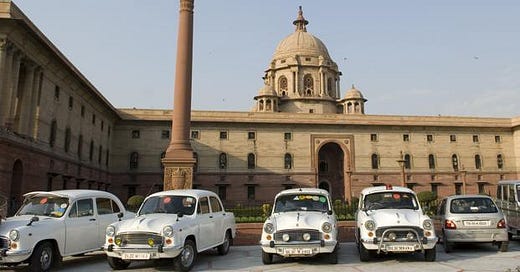Official Position in Brief
The ambitious ₹6 lakh crore “National Monetisation Pipeline” programme unveiled by the Union Finance Minister, Mrs Nirmala Sitharaman has triggered the lively debate in the political as well as academic circles. The Minister has been at pains to underscore that the ownership of the underlying underutilized assets would continue to vest with the Central Government or its entities. What would be transferred to the private sector, after transparent and competitive bidding, would only be the limited right to manage or operate these assets, for a predetermined finite period.
The BJP as a political party has never been shy of using the word “privatisation”, although the term “disinvestment” has been frequently preferred. In fact, this chimes very well with the citizen-friendly slogan of ”Minimum Government, Maximum Governance”, often stated by the Prime Minister himself.
Opposition Viewpoint
The political rhetoric by the opposition parties has essentially been confined to the allegation of “selling the family silver” — built up arduously by the successive Governments out of taxpayers’ hard-earned money — to crony capitalists. The economists and academicians opposing this scheme conceptually have pointed out that the Government may get only a fraction of the replacement value of capital cost, its upfront receipts being confined to the NPV (Net Present Value) of the expected income stream, after duly adjusting for the risk premium and inflation.
Niti Aayog Perspective

The Niti Aayog CEO, Mr Amitabh Kant, has, on the other hand, defended the initiative stating that these receipts, expected to be received over the next four years, would be utilised for additional capital expenditure by the Central Government, thereby triggering a benefic multiplier effect in the economy. A part of this amount may also be applied to retire the burgeoning debt burden of the Central exchequer. Of course, there are then the usual arguments about the efficiency gains through better managerial practices of the private sector as compared to the outdated bureaucratic mode of handling things by the “babus” in the Public Sector.
Potential Pitfalls
Given the type of contracts which the Government is often wont to sign and given the quality of its legal teams, it is not too difficult to visualise a scenario where the winner of the bid might default in the payment and yet continue to operate the asset and earn income from it. The astronomical AGR dues that the telecom giants have piled up is merely an illustration of this apprehension.
Safeguards Proposed
We thus delineate the following points to ensure that this ambitious programme not only succeeds but also achieves its predetermined objectives, which like in many other policies of the Government, are often not clearly predefined.
1. The field should be thrown open to global players and 100% FDI should be allowed. If only the domestic players are made eligible, they will merely dip into the gross investable pool created by the Indian economy and would necessarily be at the cost of other projects that they or the smaller players might have undertaken.
2. Since most of the assets proposed to be monetised are virtually natural monopolies, we need to have truly independent statutory “regulators” in place to ensure not only the quality of the service to be provided but also provide a safeguard that the customer/citizen is not made to pay exorbitant user-charges through his nose.
3. Since the Government Ministries/ Departments tend to work in silos and most of these assets would lie within the domain of the respective Ministries, different practices might emerge in handling the monetisation process. Thus, a separate Department or Ministry, working in tandem with the Administrative Departments, needs to be created to ensure not only uniformity in the process but also cross-pollinating the ideas emerging from the monetisation process in different sectors.
4. Close monitoring of the physical and financial parameters committed by the private operator must be ensured so that we don’t land up with a situation where the problem becomes intractable, before the Government really wakes up to the gravity of the situation. Maybe a separate Mission, manned by professionals, needs to be created.
5. Since the private player should bear a bulk of the payment risk, the banks in general and the public sector ones in particular should not be forced to lend to the entities who do end up coming out as successful bidders.
6. Lastly, in any case of wilful default, severe penal and criminal action should be expeditiously initiated and carried to its logical conclusion.
If these precautions are interwoven into the entire scheme at the initial stage itself, we may well see this ambitious programme succeeding, with the concomitant benefits to the economy in general and the Central Government finances in particular. Bereft of these, the entire scheme may just potentially be a recipe for a mega-scam or non-performing assets in the hands of the already stressed public sector banks.
— — — -
KBS Sidhu recently superannuated from the IAS, 1984 batch of Punjab Cadre.
This was first published on 27th August, 2021 in the Chandigarh Edition of the Hindustan Times.




